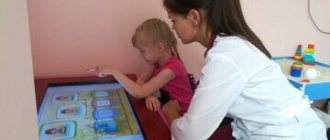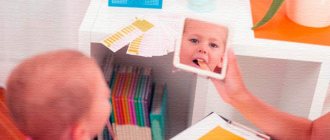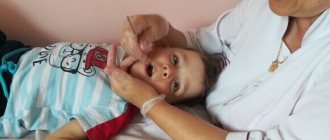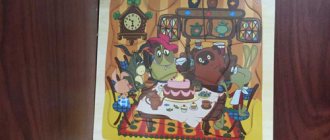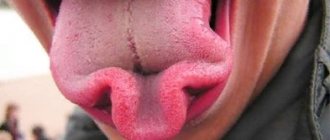Definition of the concept
Sensory integration is the process of organizing sensations occurring in the central nervous system, arriving simultaneously from different sensory systems (vestibular apparatus, proprioception, touch, hearing, vision, smell and taste), which ensures the harmonious functioning of the structures of the nervous system and allows a person to carry out effective adaptive interaction with environment.
Thanks to this process, information flowing simultaneously through several sensory channels is ordered and combined into a single whole, which leads to the formation of a holistic perception of the situation and creates the possibility of purposeful, meaningful action in this situation. In addition, in the process of processing sensory information, the sensations we receive are endowed with meaning, and the most important information is selected on which to focus attention at the moment.
The following example can illustrate the process. When a child plays with blocks, he feels them visually, as well as through the skin, muscles and joints of the hands, hears the sounds of the blocks knocking against each other, at the same time his brain receives information about the position of the body and its parts in space from the vestibular and muscle-articular receptors , also at this moment he can smell food being prepared in the kitchen and hear the sounds of the TV on. Thanks to the correct organization of the complex of incoming sensations in the brain, the child sees the cubes holistically, understands that these are cubes and not something else, and can perform purposeful actions with them (for example, fold a tower), while maintaining a certain body posture and not being distracted by smells and sounds that are unimportant in a given situation.
The development of information processing processes occurs during the child’s active and varied interaction with the outside world. In the first 7 years of life, the child’s brain is configured, first of all, to process sensory information, the child’s perception and thinking are based directly on the sensations received, and the activity is predominantly motor in nature. The successful sensorimotor development of children during this age period contributes to the further development of their mental and social skills. Thus, sensory integration developed by children in early childhood and preschool age during games, speaking, and physical activity is the basis for more complex integration necessary for the development of writing, reading, counting and other educational programs, as well as for adequate social behavior and ability cope with problems.
You will learn:
- Understand the specifics of behavioral and learning disorders in children from the point of view of maturation of the nervous system.
- To differentiate sensory processing disorders in various forms of dysontogenesis in children (ASD, STD, mental retardation, etc.).
- Independently identify the child’s sensory profile and build a subsequent correction process.
Teacher: Poroshina Elena Aleksandrovna
After completing the program and writing the certification paper, you will receive: A certificate of advanced training for 40 hours. All documents are officially licensed by the Ministry of Education and give the right to conduct psychological practice in current areas of psychology.
Sensory integration dysfunction
In the case of incorrect, ineffective processing of sensory impulses by the central nervous system, especially in the tactile, proprioceptive and vestibular spheres, which are the foundation of other areas of sensitivity, we can speak of sensory-integrative dysfunction.
According to modern ideas, based on data from many studies, 4 main groups of sensory integration disorders :
1. Dyspraxia or deficit of praxis, that is, the ability to plan new movements, which is associated with a failure in the processing of proprioceptive, vestibular or tactile information. This group includes the following types of disorders:
- Deficits in bilateral integration and development of sequences of actions, arising against the background of problems with processing vestibular and proprioceptive information. This is a mild form of praxis disorder. Children with this type of deficit have difficulty coordinating movements of the right and left sides of the body, as well as executing a pre-planned sequence of movements and anticipatory control of these movements. For example, it is difficult for them to place their hands in the right place in time to catch the ball or to jump, alternately bringing and spreading their arms and legs.
- Somatosensory dyspraxia or somatodyspraxia, caused by difficulties in processing vestibular and proprioceptive, as well as tactile information. This is a more severe form of praxis disorders, since due to poor processing of tactile information, the child’s formation of his own body diagram suffers to an even greater extent; he does not feel the body well and does not understand its capabilities. Such children will experience both the difficulties encountered with deficits in bilateral integration and sequential development of actions, and difficulties in performing simpler movements that require only ongoing feedback from their own body. For example, these children may have difficulty learning self-care skills, dressing themselves, buttoning buttons, tying shoelaces, using crayons, pencils, etc.
- Postural deficits associated with problems processing vestibular and proprioceptive information. Postural reactions are reactions aimed at maintaining body posture and balance. And postural background movements represent an imperceptible redistribution of tone in the muscles, necessary for normal movement of the limbs and maintaining balance with the body. Accordingly, postural deficits are expressed in difficulties in maintaining posture, balance, and normal muscle tone necessary to perform any action. This deficiency is not directly a violation of praxis, but may underlie the occurrence of the disorders described above.
- The child’s weakness in distinguishing tactile stimuli, manifested in difficulties in localizing and recognizing the nature of touches on the body. This weakness is not directly a praxis disorder, but, as a rule, underlies somatodyspraxia.
2. Dysfunction of sensory modulation. Sensory modulation refers to the ability of the central nervous system to organize adequate responses to sensory input. Impaired sensory modulation manifests itself in excessive strength or weakness of response to sensory impulses arriving through different sensory channels. There are several main types of sensory modulation disorders:
- Sensory defense, caused by the child's increased response to sensory sensations and the emergence of a sense of danger from sensations that other people would consider harmless. It is expressed in the child’s defensive reaction to sensory stimulation such as aggression or avoidance of further contact. Defenses can occur in any sensory modality, but the most common is tactile sensory defense, that is, a reaction of flight or aggression to any touching of the child’s body.
- Gravitational uncertainty associated with weak processing and overreaction to vestibular-proprioceptive information. Gravitational uncertainty manifests itself in the form of fear of falls and movements associated with lifting the legs off the supporting surface or with the child’s body deviating from a vertical position, as well as difficulties in maintaining posture and balance.
- Movement intolerance due to processing deficits and overreaction to vestibular sensations. It is expressed in strong negative vegetative reactions of the child (nausea, vomiting, dizziness) to movements that would seem harmless to other people.
- Hyporesponsiveness, that is, excessive weakness of response to sensory stimulation of any modality. Children with hyporesponsiveness may either not notice sensations at all (for example, not react in any way to touching the body), or respond to them much weaker than expected.
3. Deficiency of visual perception and hand-eye coordination, which are the foundation of such complex cognitive functions as visuospatial analysis, design, reading, drawing, writing. Since the development of the visual system largely depends on the vestibular, proprioceptive and tactile systems, often the root cause of visual sensory processing disorder is impaired integration of sensations from these systems.
4. Deficit in processing auditory and auditory-speech information, which is most dangerous because it can lead to a slowdown in speech development and communication skills. It manifests itself most clearly in the form of difficulties in processing and interpreting the necessary auditory information when it is presented in an environment noisy with other sounds.
The creator of the sensory integration theory, American occupational therapist and child development specialist E. Jean Ayres also lists the main, most common and obvious signs that can indicate to parents that their child has a sensory processing disorder:
- Hyperactivity and excessive distractibility of the child.
- Behavioral problems (for example, the presence of aggressive tendencies, increased vulnerability of the child, withdrawal from social contacts).
- Low muscle tone, weakness and fatigue, difficulty coordinating movements.
- Difficulties in orientation in external space and the space of one’s body.
- Slow acquisition of language and speech skills.
- Difficulties in learning at school, mastering writing, reading, mathematics.
How to adjust
Here are several basic types of activity that can be combined depending on the specific manifestation of sensory disintegration.
Causes and risk factors
Children with motor alalia are usually born with this pathology. The causes most often are various injuries and pathological processes that occur during the intrauterine development of the child. During pregnancy the following can cause harm:
- alcohol;
- sudden changes in hormonal levels;
- infections;
- falls and injuries;
- placental abruption;
- depression, constant stress.
Alalia can also cause problems in the first years of a child’s life. Brain damage is caused by:
- weak contractions and unsuccessful birth;
- breathing problems immediately after birth, due to which the brain does not receive enough nutrition;
- severe hypothermia of the newborn.
The disease can also develop after suffering from rubella, meningoencephalitis, severe head injuries and bruises, and due to somatic pathologies.
General recommendations
For advice, contact a specialist from our center. We will provide you with the primary necessary information by calling +7(921) 995-61-57, and at the appointment we will conduct a comprehensive diagnosis and draw up an individual plan for sensory therapy.




